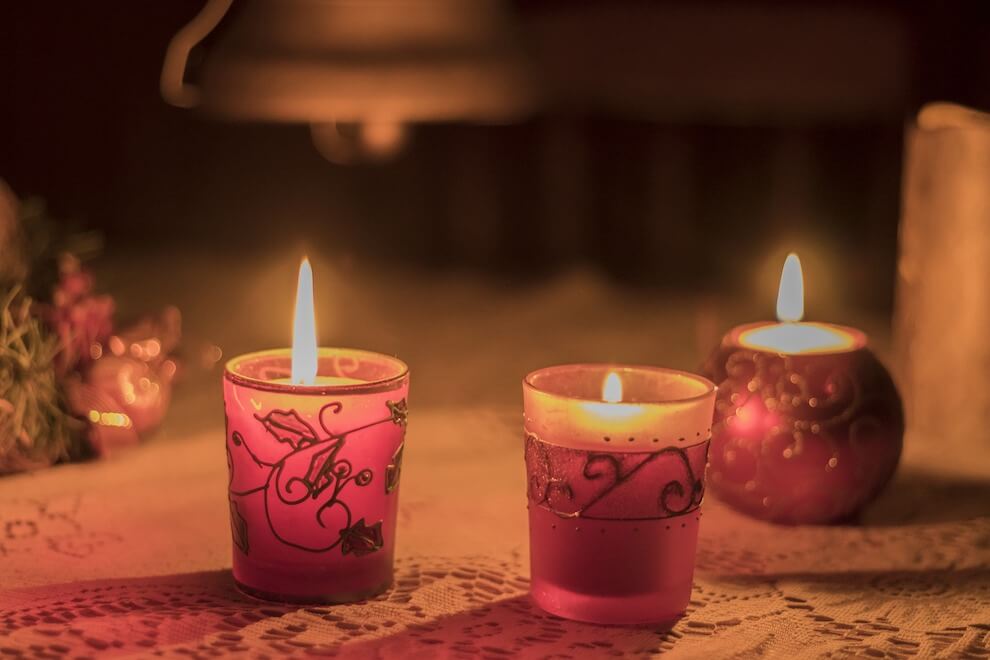As winter approaches every year, the sun begins to show less and less light than it did in the summer months, ending in the winter solstice. In the northern hemisphere, at around the time winter fast approaches, the days become shorter and the darkness of night drags longer.
In ancient times, people depended heavily on the cyclical quality of the seasons and so they paid attention to the shortening days. Many traditional celebrations can trace their roots to the winter solstice.
The winter solstice, in astronomy, is the moment when Earth’s orbit places one hemisphere tilted further away from the sun. Interestingly enough, planet Earth has two winter solstices in a single year. One in December in the northern hemisphere, and one in June in the southern hemisphere.
Christmas tree or yule log on winter solstice
In December, many of us decorate a traditional Christmas tree as one way of celebrating the winter holiday. But how about instead of adorning the tree with pretty colorful baubles, we just chopped it and burn it in the fireplace? This is the yule log tradition and it may have been replaced with decorating a tree.
Bizzare as it may appear now, that was the tradition for germanic people before Christianity settled in. Keeping a fire lit in the cold dark winter season to get through it and arrive in spring was important in this period.
Rebirth of the sun during the winter solstice
A major theme linked to the winter solstice is the rebirth of the sun. The winter solstice marks the shortest day in the year with the fewest hours of daylight. Fear of the dark is one deeply rooted in human consciousness.
Ever since prehistory, when man had to be alert to survive perilous days and nights with predatory animals stalking about. So people looked to create a safe luminous environment.
We only need to look at the many street lights littering our cities. Before such technological advantages were available, people used fires, candles, and torches.
The famine months
The shortest day of the year thus has much cultural significance. It marked the beginning of winter. Going into winter, starvation was a real threat. “The famine months” is what those winter chilly periods are known as.
Cattle were slaughtered so that they would not have to feed them during winter. It also provided a reserve of meat to carry people through this cold period. This survival method has instilled in culture a tradition of festivity.
Celebrating the bountiful harvest and the plentiful meat is a part of many cultures around the world close to the winter soltice period.
Ancient festivities
Ancient Egyptians and Persians combined traditions with the ancient Romans in a festival to the god, Saturn, around the time of the winter solstice. They celebrated with a feast, gift-giving, and an embracing of peace. No wars happened in this period and all were equal.
The masters served the slaves and servants, a kind of opposite day. They lit candles and lamps to keep away the creeping night-time darkness. Romans too celebrated Saturnalia, in the name of the god Saturn. They gave offerings to the god in the temple of Saturn.
A public banquet, gifts exchanges and general merriment followed. The name of the celebration and the reason for it’s link to Saturn is that he was an agricultural deity.
The battle between light and darkness
In Iranian culture, the observance of Yalda takes place to mark the coming of winter. People in Iran celebrate by gathering with friends and family to eat together, drink and read poetry. Candles and fires are lit to aid the sun in its fight with the darkness, which was evil.
The Germanic people and those of the Scandinavian peninsula held a twelve-day festivity. These celebration came with sacrifices to the gods to ensure a successful new harvest year.
It was also the time to burn the yule log. This too had some specific requirements. In some regions, a piece of last year’s yule log lit up the next one. The goal seems to have been to light up the house and turn night into day.
Celebrating light
The underlying intention of many of these festive endeavors is to face the darkening days with a celebration of light. By the fireplace, keeping vigil in the dark, awaiting the return of sunnier days. Something we still do today in some variant around Christmas time and Christmas tree.



Leave a Comment